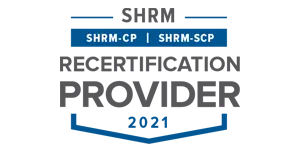D
-
Six Sigma Decision Tree.
Green and Black Six Sigma Belts use decision trees to help them decide on a course of action. Decision trees are graphical tools that explore potential options available to you. You should begin your tree with the decision you need to make, represented by a dot or circle. Then you should branch off with a line to represent potential future decisions, outcomes, or consequences. All these ideas should contribute to the final decision. Decision trees are primarily used in process improvement to find the most beneficial route.
-
Discriminant Analysis.
A type of multivariate analysis used by Six Sigma Green Belts or Black Belts. Discriminant analysis should be used in process improvement. This helps you understand how continuous input variables differentiate between categorical outputs. In discriminant analysis, you have a single categorical output from a process, with a range of continuous inputs influencing it. By analyzing each factor, you can learn how it leads to your categorical output. You can also use discriminant analysis in situations where you must determine factors influencing a potential cause. For example, the factors that contribute to a customer defaulting on a loan. In this situation, there are two states, default or not default. The inputs affecting the outcome may consist of factors like age, financial stability, employment, etc.
-
DMADV.
Six Sigma Belts use DMADV in process improvement projects. DMADV uses a series of methodical actions commonly used in Design for Six Sigma, rather than the sequence used in DMAIC. DMADV stands for the following.
- Define (the first stage, where we define project goals).
- Measure (the second stage, here you measure the expectations of your stakeholders and customers, leveraging their demands. Techniques such as benchmarking and competitor analysis are useful here).
- Analyze (the third stage involves recognizing and analyzing alternative solutions to process problems. Root cause analysis, decision trees, and discriminant analysis will be useful to you here).
- Design (this stage requires you to create a detailed design of your solution, plotting it out meticulously).
- Optimize (this is an additional stage, added to form DMADOV. Optimize involves experimental design and simulation to find ways to optimize your solution).
- Verify (the final stage requires you to verify your design via pilot studies, as well as to evaluate it before and during activation).
E
-
Efficiency of Estimators.
Sometimes known as EOE, efficiency of estimators is a type of statistic in Six Sigma statistical analysis. EOE represents the properties of a population. You can have more than one estimator representing a specific property, depending on its suitability. Before selecting your preferred EOE, consider how alternative estimators may affect efficiency. They can also be biased, which is why the most efficient estimators typically give the lowest expected variance of error. This is also the lowest variance possible from an estimator divided by the probable variance of your specified estimator.
-
EVOP.
EVOP stands for the Evolutionary Operation of Processes. It is a type of experimental design technique used by practitioners of Six Sigma. Used by Black Belts, EVOP requires small changes you to make small changes to a process when in normal operation. With each additional change, you come closer to finding the optimum operation conditions for that process. Changes may include removal of a none-value-adding step or increase in velocity. EVOP allows you to find the optimum solution to any problem progressively. However, it can take considerable patience and restraint, as EVOP typically works over an extended period. This is beneficial as it minimizes any disruptions to the normal process operation while moving towards an improved state.
-
Experimental Design.
Also known as Design of Experiments, Experimental Design is a Six Sigma tool used by Green and Black Belts in process improvement. You can use Experimental Design when dealing with multiple affecting factors, testing each factor simultaneously, to provide greater results than the One Factor at a Time method. Experimental Design varies factors systematically, analyzing the resulting responses to find a relevant regression equation. Experimental Design involves two approaches, the classical method, and the Taguchi method. The Taguchi method focuses on designing experiments to deal with variation. The most commonly-used design types are factorial designs and fractional factorial designs, as well as Plackett-Burman designs. Experimental Design also appears in the Optimize stage of DMADOV.
F
-
Factor Analysis.
Factor analysis is another type of multivariate analysis, involving numerous continuous factors combined to create a smaller amount. The smaller number usually sheds light on where quality or process variation has come from and why. Six Sigma Belts know factors that influence variation as eigenvectors. If you had conducted a questionnaire on customer reactions to a new food gadget, you could use the questions to form eigenvectors. If there were a hundred questions, three eigenvectors would be sufficient, e.g. usefulness, safety, and practicality, to explain variation between respondents. Much like root cause analysis, fault tree analysis, and discriminant analysis, factor analysis is reserved for Green and Black Belt use.
-
Fault Tree Analysis.
Six Sigma Green Belts may use fault tree analysis in process improvement projects. When analyzing the issue at hand, for example, slow production speed or insufficient product quality, fault tree analysis can identify root causes, much like RCA. Fault tree analysis (FTA) uses a tree-like structure, starting with the problem, branching downward to describe a potential cause and the root causes below that. Fault tree analysis enables you to specify the fine details of a process and the faults affecting it.
-
FMEA.
FMEA, also known as failure mode & effects analysis, helps Six Sigma practitioners to evaluate risk on their projects. In FMEA, you should evaluate every potential failure mode for the following. S – severity of consequences, provided failure occurs. O – probability of a failure occurring. D – the probability of detecting failure, e.g. variation or defect, before the product is shipped. You should rate each category from 1 to 10, with each value multiplied to identify its risk priority number (RPN). Once you have the RPN, you can calculate if it is above your threshold. If it does succeed the threshold, you can then reduce it. FMEA appears in the Control state of DMAIC and DMADV for Six Sigma projects.









No responses / comments so far.